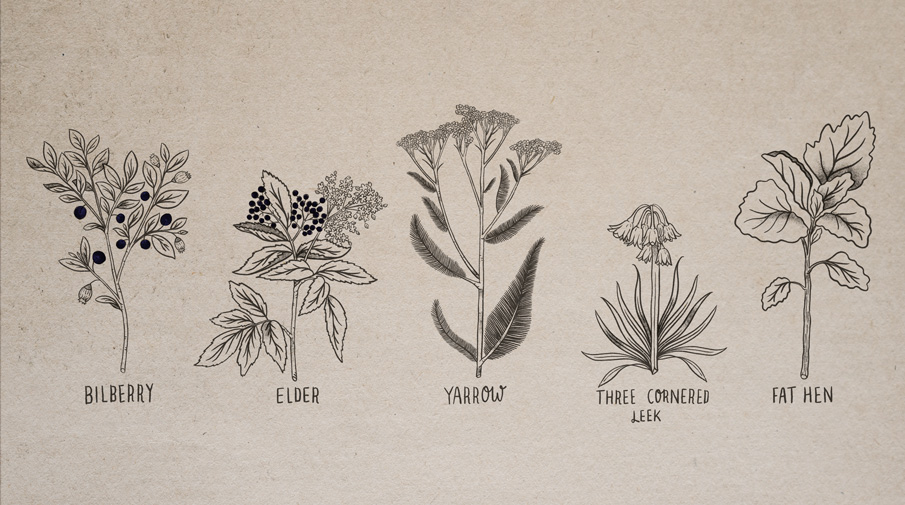Come spring and summer, every outing is an opportunity to rummage around in nature’s larder. Once you know what to look for, it’s amazing how many of the hedgerows, shrubland and overgrown areas you walk, jog or cycle through are a treasure trove of edible wild produce.
Beckie and Christian from The Saltbox, a local woodland dining and outdoor cookery school, are well versed in gathering goodies from the wild and have shared some of their favourite ingredients for you to look out for.
Yarrow
When you’ll find it: May to October.
How to spot it: Look out for its feathery leaves and cluster of white or pink flowers in grassy areas.
How to use it: The delicate sprigs are sweet and fragrant with notes of anise, and make a perfect garnish for canapés (especially with game or trout) or in a salad. You can also dry the leaves and use them as a herb for cooking.
Elder
When you’ll find it: You’ll see flowers from May to June, which turn to berries from August to September.
How to spot it: Elder is prolific across the country in both urban and rural areas. Its wide, flat splays of small white flowers turn to berries in the late summer and can be found in scrub, wood edges and hedgerows.
How to use it: The flowers need to be picked on a warm, dry day (ideally
in the morning) for the best flavour. Use them in a classic cordial or champagne, or dip in a light batter to make delicate fritters. The berries make an excellent vinegar.
Fat Hen
When you’ll find it: Fat Hen is technically a ‘weed’, so you’ll find it all over
the place in fields, gardens and hedgerows.
How to spot it: Its diamond- or goose foot-shaped leaves are covered with narrow white hairs, but don’t sting like nettles. Pick leaves and flower heads from the top of the plant for the best flavour.
How to use it: Fat Hen is also known as Wild Spinach, and can be wilted down in much the same way. It’s also excellent blended into a dressing with parsley, capers and olive oil.
Three Cornered Leek
When you’ll find it: March to September, with bright white flowers from April to June.
How to spot it: So-called because of its triangular stems, when it’s in bloom Three Cornered Leek can be spotted by its heads of flowers that hang towards the ground like white bluebells. When not in flower, there’s little to distinguish its long, slender green leaves from grass, but keep an eye out for those triangular stems, break off a leaf and you’ll know from the strong, garlicy smell if you’ve got the right plant. It grows almost everywhere, but is especially fond of cool, wet soil and woodland.
How to use it: Think of it as a punchier cousin to Wild Garlic – it has a strong, alium flavour like spring onions, baby leeks or chives. It’s great in a pesto or sliced over scrambled eggs.
Bilberry
When you’ll find it: They can appear as early as July, but peak in August and September.
How to spot it: Bilberries look much like blueberries but without a trumpeted end. Keep an eye out for them in wild hedges and shrub.
How to use it: These sweet, sharp berries are best cooked and work well in a jam, compote or crumble. If you’re feeling adventurous, turn them into a brandy or use as you would sloes to flavour gin or vodka.
If you want to learn more about foraging, join one of Saltbox’s walking and dining events this summer. Find out more at wearethesaltbox.co.uk





